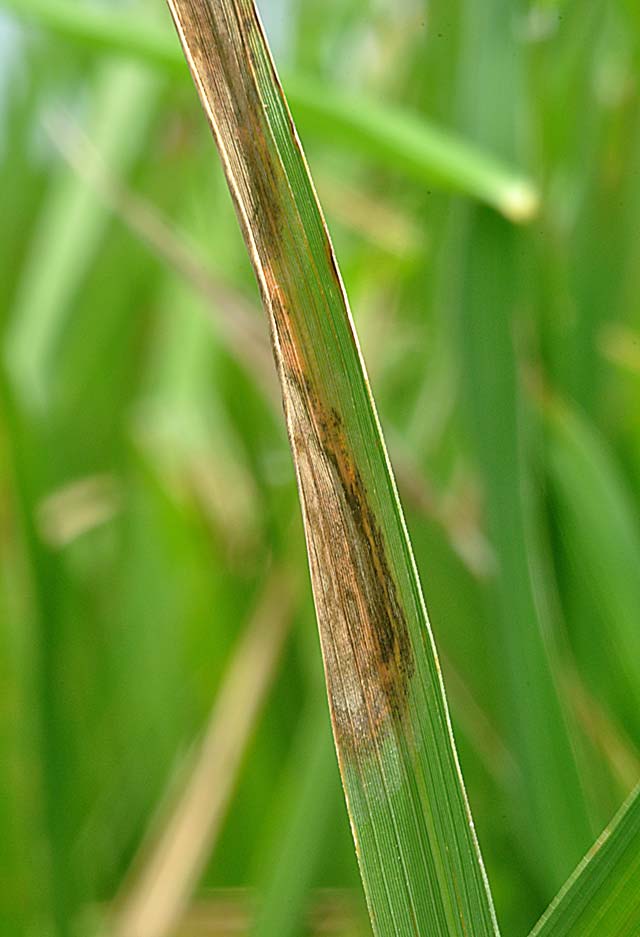Leaf Scald
 What it does
What it does
Leaf scald is a fungal disease caused by Microdochium oryzae, which causes the scalded appearance of leaves.
Why and where it occurs
Disease development usually occurs late in the season on mature leaves and is favored by wet weather, high nitrogen fertilization, and close spacing.
It develops faster in wounded than in unwounded leaves.
The sources of infection are seeds and crop stubbles. Wet weather and high doses of nitrogenous fertilizer favor the disease.
Leaf scald commonly occurs in Central and South America, where it has caused significant yield losses. It also occurs in Asia, Africa, and the U.S. The disease is found in upland, rainfed, irrigated, and mangrove areas.
How to identify
Check the plant for the following symptoms:
- zonate lesions of alternating light tan and dark brown starting from leaf tips or edges
- oblong lesions with light brown halos in mature leaves
- translucent leaf tips and margins
Individual lesions are 1−5 cm long and 0.5−1 cm wide or may almost cover the entire leaf. The continuous enlargement and coalescing of lesions result in blighting of a large part of the leaf blade. The affected areas dry out giving the leaf a scalded appearance.
In some countries, lesions rarely develop the zonate pattern and only the scalding symptom is evident.
In Costa Rica, the disease has been reported to cause decay of coleoptiles, with red brown infection, root rot, and a head blight that caused considerable sterility, flower deformation and glume discoloration.
Infected leaf tips also split near the midrib especially when there are strong winds.
Leaf scald can be confused with leaf blight. To confirm scald, visually examine the leaf for scalded appearance. Immerse cut leaves in clear water for 5−10 minutes, if no ooze comes out, then it is leaf scald.
Why is it important
Leaf scald has caused considerable losses in Latin America and West Africa.
How to manage
- Use resistant varieties.
Contact your local agriculture office for an up-to-date list of available varieties. - Avoid high use of fertilizer. Apply Nitrogen in split.
- Use benomyl, carbendazim, quitozene, and thiophanate-methyl to treat seeds.
- In the field, spraying of benomyl, fentin acetate, edifenphos, and validamycin significantly reduce the incidence of leaf scald. Foliar application of captafol, mancozeb, and copper oxychloride also reduces the incidence and severity of the fungal disease.
To prevent pathogen survival across cropping seasons:
- Remove weeds.
- Plow under of rice stubbles.
- Remove infected rice ratoons.